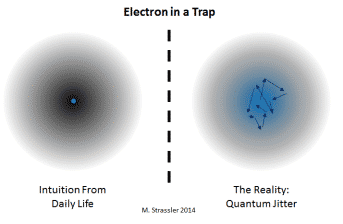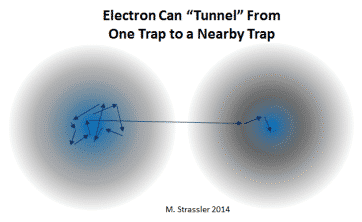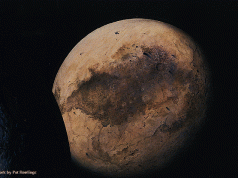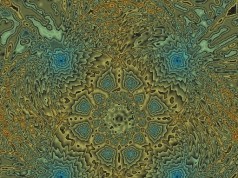What’s nature? Many cultures, in the last two million years, identified nature to God(s). What’s god? The end-all, be-all. Assuredly nature fits the bill.
A more constructive point of view is to introduce the notion of computer. Nature is a computer, and the universe the set of all solutions.
The notion of computer is not really new: the Greeks had very elaborated mechanical computers. They used it to predict the motions of celestial objects.
As I have argued in “ULTRABIOLOGY”, the 2,500 year old notion of computing has become obsolete. It turns out that Nature is a QUANTUM computer.
What’s the Quantum about? As I argued in QUANTUM WAVE, the Quantum is about emitting and receiving energy by packets, while transmitting it as waves.
A world of waves? It’s going to be fuzzy, because stopping a wave with a wave is not going to be work too well, or be instantaneous. So Quantum waves tend to go through walls a bit.
Indeed, the wave equations proposed to depict Quantum processes are always characterized by having a potential on the right-hand side. Even if the potential changes abruptly, the wave will not. This is what the “Tunnel Effect” is all about.
Matt Strassler wrote an excellent article on Quantum tunneling (abstracted in The Amazing Feat Of Quantum Tunneling). Here are some extracts, although readers are encouraged to read the much more complete original.
“..in the quantum world we live in, no object is ever quite stationary for more than an instant, nor is its location exactly knowable.”
Why? Because waves are always moving and waves are never really local.
From Tunneling A QUANTUM Process:

A trap for an electron, which is like a bowl for a marble. (Left) Normal life would lead us to expect that the electron, like the marble, would be stationary if placed at the center. (Right) But quantum `jitter’ assures that the electron is always slightly in motion, and never quite at the center for more than an instant. A blue fuzz evokes the fact that the electron is, in some sense, spread out around the center of the trap.
If I put an elementary particle like an electron in a magnetic trap that acts like a bowl, tending to push the electron toward the center just the way gravity and the walls of the bowl push the marble toward the bowl’s center in Figure 1, then what is a stable location for the electron? Just as you would intuitively expect, the electron’s average position will be stationary only if I place the electron the center of the trap.
But quantum mechanics adds a wrinkle. The electron cannot remain stationary; there is a sense in which its location is subject to a sort of “quantum jitter”. This causes its position and its motion to be constantly changing, or (better) even to be undefined, by small amounts. [This is the famous “uncertainty principle” in action.]“
[BTW, this uncertainty reflects only the fact that Quantum Physics does not say what an electron “IS”. There is no “IS” there. A wave is all there is. And a wave is hard to define “locally”, it always comes with a neighborhood! Actually, it’s even worse than that: the only way to localize a wave is to make it a “wave packet”]
“Only the average position of the electron is at the center of the trap; if you look for the electron, you’ll typically find it somewhere else in the trap, near but not at the center. And the electron is only stationary in the following sense: it’s typically moving, but its motion is in a random direction, and since it’s trapped by the walls of the trap, on average it goes nowhere.
That’s a bit weird, but it just reflects the fact that electrons aren’t what you think they are, and don’t behave like any object you’ve ever seen.
By the way, it also assures that the electron cannot be balanced on the edge of the trap, in contrast to a marble on the edge of a bowl (as in Figure 1, bottom). The electron’s position isn’t sharply defined, so it can’t be precisely balanced; and so, even without the trap being jiggled, the electron would become unbalanced and almost immediately would fall off.
But the weirder thing is what happens if I have two traps, separated from one another, and I put the electron in one trap. Yes, the center of either trap is a good stable location for the electron. That’s still true. in the sense that the electron can stay there and won’t run away if you jiggle the trap.
However, if I put the electron in trap number 1, and walk away, sealing the room etc., there’s a certain probability (Figure 4) that when I come back the electron will be in trap number 2.

Fig. 4: An electron in one trap can tunnel into a second nearby trap, even though this naively seems as impossible as the marble in Figure 2 moving spontaneously from the blue bowl to the red one. Quantum `jitter’ is ultimately responsible for this remarkable possibility. (Actually the marble can tunnel too, but being vastly heavier, and with the bowls being macroscopically large and distant, the probability is unbelievably small that this will ever happen to any marble anywhere in the universe.)
How did it do that? If you imagine that electrons are like marbles, you will not be able to understand this. But electrons are not like marbles [or at least not like your intuitive notion of a marble], and their quantum jitter offers them an extremely small but non-zero probability of “walking through walls” – of going someplace that it would seem impossible for them to go – and ending up on the other side. This is called, poetically, “tunneling” – but you should not imagine that the electron digs a hole through the wall. And you’ll never catch the electron in the wall – in the act, so to speak. It’s just that the wall isn’t completely impermeable to things like electrons; electrons are not things that can be easily trapped.
Actually, it’s even crazier than this: because what is true for the electron actually is true for the marble in the bowl. The marble could end up in bowl 2, if you could give it enough time. But the probability of this happening is extremely extremely extremely small. so small that if you waited billions of years, or even billions of billions of billions of years, that still wouldn’t be enough. For all practical purposes, it will “never” happen.
The point is that our world is a quantum world, and all objects are made from elementary particles and are subject to the rules of quantum physics. Quantum jitter is ever-present. But for most objects that have a lot of mass compared to an elementary particle – a marble, for instance, or even a typical speck of dust – this quantum jitter is too small to observe, except in very specially designed experiments. And the consequent ability to tunnel through walls is also, therefore, never seen in ordinary daily life.
To say it another way: any object can tunnel through a “wall”, but the probability for it to do so typically goes down very rapidly if
- the object has a large mass
- the wall is thick (i.e. there is a long distance between its two sides)
- the wall is hard to penetrate (i.e. to punch through the wall in the usual way would require a lot of energy.)
For a marble to penetrate the lip of a bowl is possible in principle, but in practice might as well be impossible. For an electron to escape from one trap to another may be easy, if the traps are close together and the traps are not very deep, but it may be very difficult, if the traps are far apart or the traps are very deep.”
WHY TUNNELING IS PHILOSOPHICALLY IMPORTANT:
Knowing about such things as the preceding, and knowing as they fit with different appearances, and knowing how we found them out, is what makes our wisdom different from that of the Ancients.
Not just a different knowledge basis, but also a different meta-knowledge basis (how we established that knowledge).
Just as drastically, recent bits of science provide us with new models for thinking in general.
For example, tunneling implies that there are no absolute separations, and that, instead, interpenetration makes the real world hold together well.
That’s why students of philosophy that have learned nothing new in the last few centuries, ought not to be taken too seriously. Even on poetry, tunneling ought to have an impact.
Tunnel Effect: if you want to be real, you have to dig it.
Patrice Ayme






